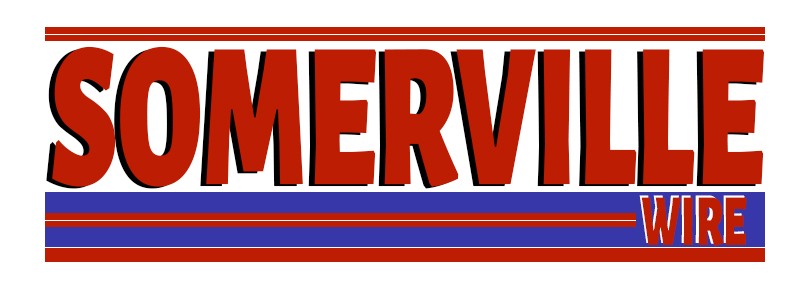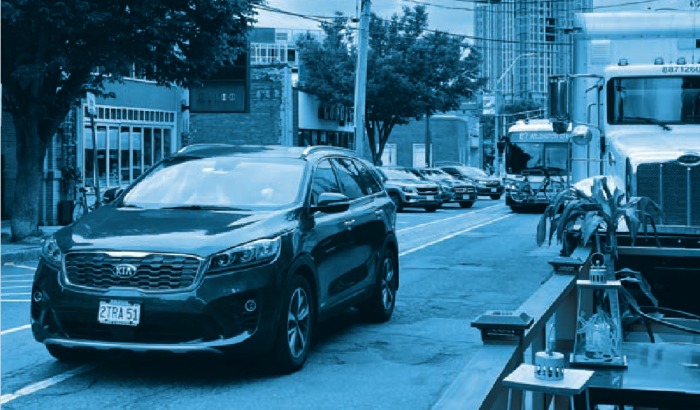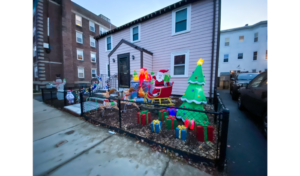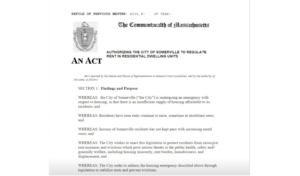City proposes new ways of looking at street usage
(Somerville Wire) – After two years of data collection and outreach to the community, the City has concluded its Citywide Parking and Curb Use Study. The research team has issued a final report summarizing findings and recommendations for developing “an effective, equitable curb-management system.” The final report proposes strategies to “address operational challenges, reduce future parking demand, and equitably allocate limited curb space.”
City staff hosted a virtual community meeting to discuss their findings last Wednesday, Oct. 19. It was the fourth public meeting held by the City since the study project began in 2019.
“Public outreach was the critical and continuous element of the study process,” the report states. Residents were engaged through public meetings held in 2021 and 2022, and a Parking and Curb Use Survey that was available between November 2021 and January 2022.
According to the task force, 2,170 responses were received from this survey. In addition, the task force engaged in tabling at public events, and did targeted outreach to senior centers, schools, houses of worship, the faith community, small businesses, and other community organizations.
The final report and most of the presentations at last week’s meeting focused heavily on the survey results to draw conclusions about how the approximately 80,000 residents plus thousands of non-residents use the city’s streets.
The report emphasizes that its recommendations “reflect the long-term vision for the city put forth in SomerVision, the Climate Forward Plan, the Electric Vehicle Charging Report, and other adopted planning documents. They also align with key ongoing planning initiatives including Vision Zero Somerville, the Bicycle Network Plan, and the Shared Mobility program.”
At the virtual meeting, Director of Mobility Brad Rawson said the city’s roads are a poorly utilized resource.
“Folks, Somerville is a city of four square miles,” said Rawson. “It’s incredible how much we accomplish in such a small, small area. When you actually dig deeper into the fabric of our neighborhoods, an incredible thing occurs to you. One of those precious square miles of land is occupied by roads and other rights of way. Think about it: 25 percent of our land. Our community has urgent needs related to affordable housing, traffic safety, open space and recreation, small business vitality, stormwater management. As a community, we have determined that our streets and our curbs represent an untapped resource to help achieve these urgent goals.”
Rawson pointed out that he and many other staff and consultants on the project are Somerville residents. “We are your neighbors. We are your partners. We are living these realities with you,” he said.
“Curb use and parking can be emotional topics. It’s OK for folks to have different priorities about how we can best allocate and use this publicly owned land. We’re a diverse community, 80,000 people and 30,000 jobs. Of course we’re going to have different perspectives, even within our own lives, at different stages of them,” Rawson said. “Let’s approach this dialogue tonight and beyond with humility and with empathy. We ask that all community members try to get out of our own heads and think about what it’s like from somebody else’s perspective. We’re all in this together, folks.”
Transportation Planner Justin Schreiber, a Mobility Division staff member, showed a graphic representing how curb use will be prioritized. “Mobility space,” referring to travel lanes for buses, bikes, and private vehicles, is the top priority. The second priority is pick-up and loading zones, which is categorized as “space for people and goods.”
Among the lowest priorities is the category that the report calls “storage,” commonly known as parking.
“I think this chart really shows how much it’s really a lot different from how our right of way is today, where storage is sort of one of the first things and one of the main things you’ll see on our streets,” Schreiber said.
One of the key recommendations of the report is to “decrease drive-alone mode share and vehicle miles traveled.” Making it harder for people to drive their personal motorized vehicles in the city is an explicit goal. “Decreasing the percentage of people who drive alone to their destinations and decreasing the total number of miles traveled by vehicles in Somerville will reduce emissions and support a healthier climate future. Somerville’s curb spaces should be regulated in a way which does not incentivize excess automobile travel when other transportation modes can function more sustainably,” the report states.
By improving the safety and accessibility of public transit, non-motorized vehicles, and ride share options, and making it harder for people to park their vehicles, the City can decrease the number of cars on the roads, the report asserts.
Based on these declared goals, the four key recommendations are to “strengthen parking administration and operations,” “reallocate curb space to support community goals,” “adjust regulations to better manage parking demand,” and “revise the permit program to meet community goals.”
The report lays out a multi-year process of change. Schreiber said many of the strategies in the report are already being implemented. “We have expanded loading zones in commercial areas and pick-up and drop-off facilities significantly over the past couple of years. There are more EV [electric vehicle] chargers in Somerville now than at any other point,” he said. “But there’s more work to be done.”
The 102-page report lays out myriad options for changes to parking and street use regulations. Proposals include increasing parking permit fees and limiting the type and scope of permits, utilizing digital enforcement technologies, expanding bus and bike infrastructure, and increasing accessible parking in all neighborhoods.
In the second half of last week’s meeting, City staff and consultants responded to questions and comments from the public.
Claire Goodwin, a senior citizen, spoke about her frustration with the process. “Senior citizens don’t have Zoom. They have no idea what Zoom is. So as usual, they’re eliminated from everything,” she said. “You already know what you’re gonna do, so why are you wasting everybody’s time?”
Schreiber responded: “A big theme of this study is about how best to prioritize our curb space given our community’s goals. This community has very, very ambitious climate and transportation goals. Part of this study is how do we use our curb space to meet those goals. And I think another big theme of the study is, again, the curb space doesn’t belong to anyone , it sort of belongs to all of us, and these recommendations were put together to try to figure out how do we meet those community goals with the space we have. And there is a de-emphasis on the use of curb space for the storage of vehicles.”
Eileen Carranza, a social worker who lives in East Somerville, said, “Honestly, I didn’t even know this was happening. I’ve been a resident in Somerville for over 20 years. I had no idea about this study. … I can tell you, in the community of East Somerville, there’s a lot of non-English-speaking families that have no idea—when I talk to them about this in their language—they have no idea that this is happening. So I also think there’s a lack of cultural sensitivity going on with these studies that are happening, because our community in East Somerville, I feel like they’re not being included.”
She added, “What I’m hearing is that this is already going to happen, and at this point I just feel like it’s too late for me to rally up my community to provide some input, because it’s already going to happen. “
Rawson replied: “I want to assure you, and all participants tonight, anybody who might be watching on video or reading about these issues, that decisions have not been made. There’s a reason that the title of tonight’s work—and the last couple of years—is called study work, not a plan. We are developing alternatives, and we are seeking feedback in every way that we can. We have taken notes on your comments. You have raised important points and they resonate with things that we have heard from many other residents and stakeholders, and things that we are committed to following up on as a city. So I don’t want you or others to feel like folks are shouting in the wind, or taking time out of their busy schedules for no benefit.”
More data will be published and shared with the public, Rawson said. The full report will be published in multiple languages.
“This is part of a process,” he added. “Tonight’s meeting is an intermediate step. There are many more ahead.”
One of the final speakers was Stephen Mackey, president and CEO of the Somerville Chamber of Commerce. Like some of the other speakers, he criticized the lack of public hearings where “the public is given fair notice to speak with the decision-makers.”
Speaking of the city planners, he said, “I think it’s time to say that public servants, whether on staff or in a consultant basis, perpetuate that public ways here should continue to be designed and redesigned—even after a death—by the same people, without those public ways having public hearings with fair notice for everyone to come and speak to the decision-makers. There’s not one decision-maker among the 43 people that have been in this call. That’s what’s wrong, and that’s what’s gonna continue to be wrong.”
Residents can send feedback to Jackie Stagnari, Project Analyst in the Traffic and Parking Division, at jstagnari@somervillema.gov or (617) 625-6600, ext. 7947.
Photo credit: Photo by Linda Pinkow. Copyright 2022 Linda Pinkow.
Linda Pinkow is a reporter for the Somerville Wire. She is also a development consultant for the Boston Institute for Nonprofit Journalism.





